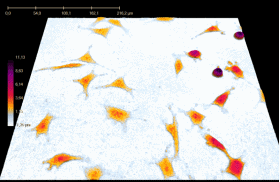 | ||||
What Is Mitosis?
CLASS NOTES from Science Prof Online
Why Do Cells Divide?
You grew from a zygote (a fertilized egg) into an organism with trillions of specialized cells. Mitosis is the process that enabled you to grow and develop after that fateful meeting of egg and sperm became ‘you’. That is the human life cycle.
Article Summary: In order for organisms to grow, develop and maintain life, cells must divide. Cellular division involves the basic stages of interphase, nuclear division (mitosis) and cytokinesis. Here's a summary.
Mitotic Cell Division of Eukaryotes
There are two major phases to the cell cycle:
- Interphase (3 substages)
- Mitosis (4 substages)
 | ||||||
SPO VIRTUAL CLASSROOMS
Cell Replacement
Cells must divide in order for an organism to grow and develop, but cell division is also required for tissue repair, maintenance, cell turnover and replacement.
Many tissues in your body are composed of cells that have a high turn-over rate.
Think of your skin. The epidermis, or top layer, is composed of dead cells that are constantly being sloughed off and replaced from below by cells of the dermis (the living cells in the layer of skin below the epidermis). If cells of the dermis were not constantly dividing to replace dead cells, your skin would eventually wear out.
This is also true of the mucous membranes of your body; the moist areas of the GI tract and urogenital tract that are the interface between your internal systems with the outside world.
Eukaryotic Cell Cycle
During the cell cycle, somatic cells (non-reproductive cells) of eukaryotic organisms grow and divide. It is the process of a single cell (parent cell) splitting into two identical ‘daughter cells’. The daughter cells are clones of the parent, and have the same number of chromosomes as the parent cell.
Cell division over 42 hours. Cells imaged culture using phase contrast time-lapse microscopy.
See Page 2 for details on the steps of mitosis!
Page last updated: 10/2015
You have free access to a large collection of materials used in a college-level introductory Cell Biology Course. The Virtual Cell Biology Classroom provides a wide range of free educational resources including Power Point Lectures, Study Guides, Review Questions and Practice Test Questions.
The SPO website is best viewed in Microsoft Explorer, Google Chrome or Apple Safari.
You have FREE access to a large collection of materials used in a college-level introductory biology course. The Virtual Biology Classroom provides a wide range of free educational resources including PowerPoint Lectures, Study Guides, Review Questions & Practice Test Questions.





